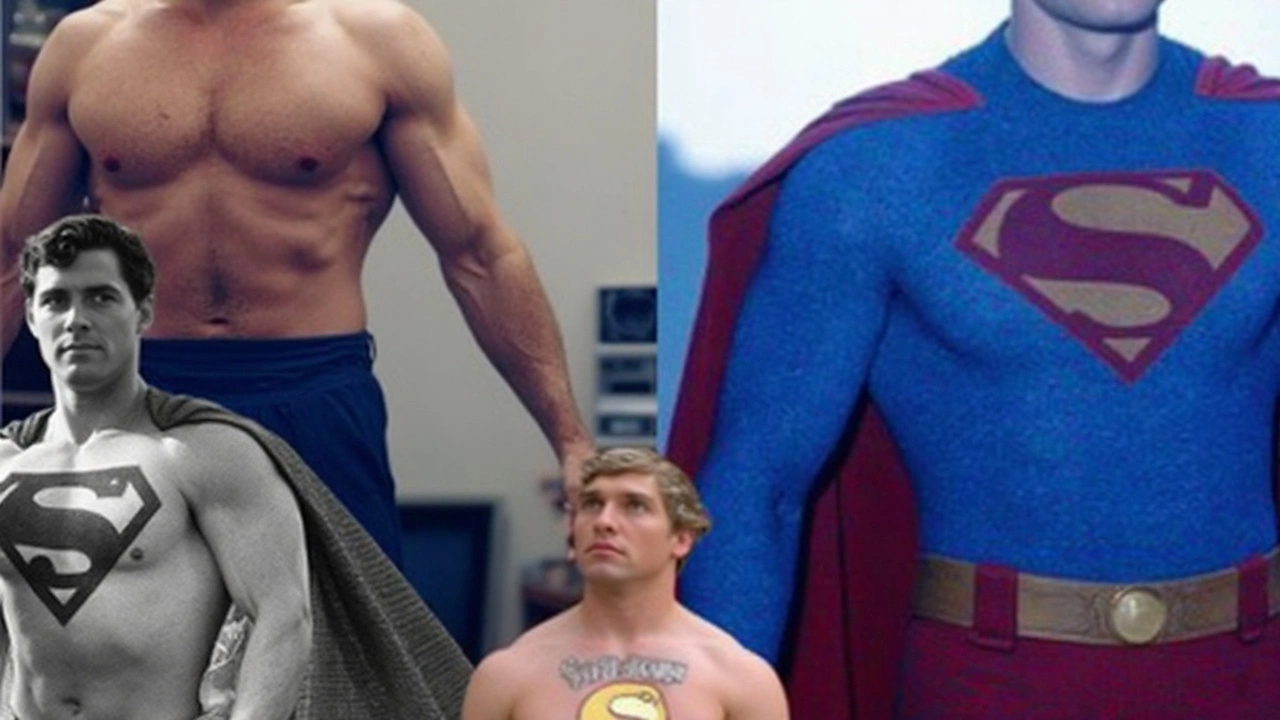When Superman’s Muscles Told a Bigger Story
The way Superman looks on screen has always said a lot about the era. Back in 1948, Kirk Alyn was the first live-action Superman. He had a frame that wouldn’t exactly intimidate anyone at a modern gym—a trim, athletic shape that matched what people thought a strong man should look like in the ’40s. George Reeves followed in the ’50s with a similar vibe. Both showed enough strength to be believable, but they weren’t the muscle-bound icons we see in today’s superhero flicks. The suits were often padded, but you’d never catch them flexing or showing veins.
By 1978, Superman needed to be bigger—literally. Christopher Reeve was cast, and he took the role seriously, bulking up with the help of professional bodybuilder David Prowse (the guy who wore the Darth Vader suit). Reeve gained about 15 kilograms of muscle, moving away from the soft, clean-cut look and into athletic territory. He wasn’t a bodybuilder, but he filled out the cape in a way that balanced power and agility. By the time Superman II came out, Reeve’s frame was even more refined—thanks to more training during the long reshoots. His version became the gold standard for decades.
Muscle, Myth, and the Modern Superman
The ’90s switched gears again. On TV, Dean Cain’s Superman in Lois & Clark was more about natural athleticism. Cain, who had played college football, needed suit modifications to handle his massive legs. It was a subtle shift away from manufactured muscle and toward genuine all-American fitness.
Fast-forward to 2006, and Brandon Routh took on the role in Superman Returns with a noticeably leaner and wirier body. His look was more about agility than sheer size, reflecting a changing mainstream idea of what power could look like. Routh stood as a counterpoint to the era’s growing fascination with extreme gym transformations—he was Superman, but less pumped up.
Then came Henry Cavill in 2013. Warner Bros. wanted Superman to be as imposing as any Marvel competitor, so Cavill bulked up dramatically. His Man of Steel was all about thick muscle, shadowed six-packs, and workout montages showing off serious lifting sessions. Cavill’s transformation set a new standard for superhero physiques—suddenly, “super” meant super-jacked.
But things are shifting again. As superhero movies multiply, audiences see characters of all different shapes. Studios are realizing that Superman’s powers aren’t really about the size of his biceps. Modern superhero designs focus on athleticism, functionality, and sometimes even realism—making room for different body types that make sense for their backstory or planet of origin. Comics originally took cues from old-school bodybuilders like John Grimek, but the screen versions today say, “Let’s add some variety.”
So, whether it’s a classic suit padded to look sturdy or a real-life actor pushing boundaries in the gym, Superman’s body has always reflected our changing view of what it means to be ‘super.’ And who knows what physique tomorrow’s Man of Steel will bring?
